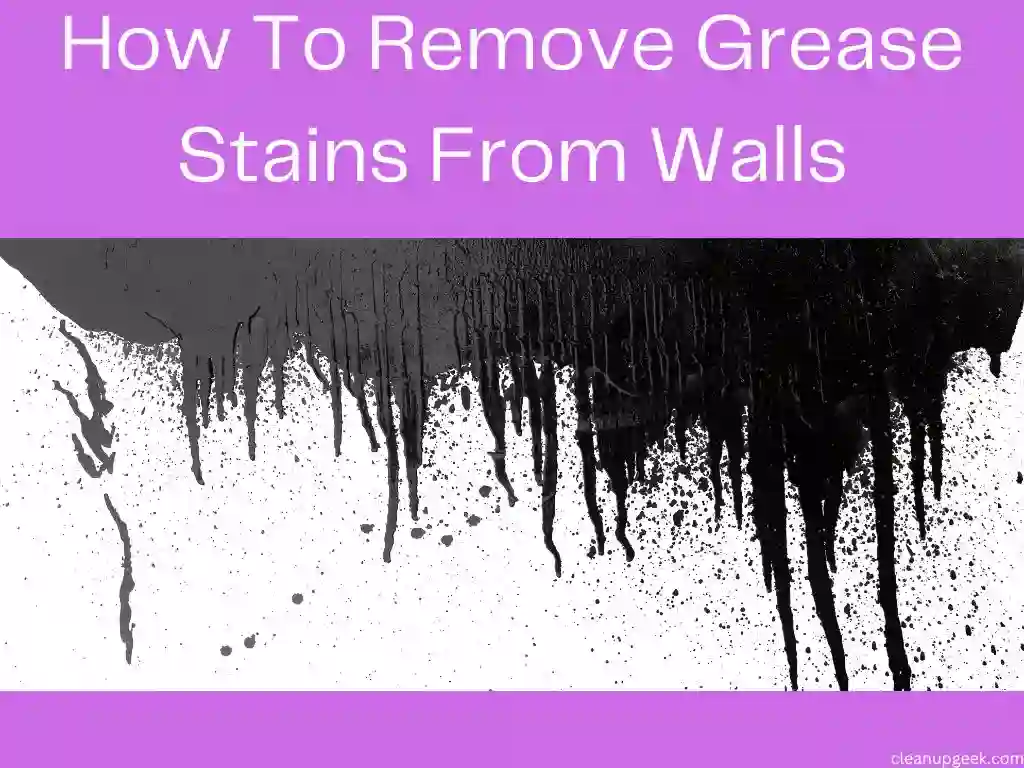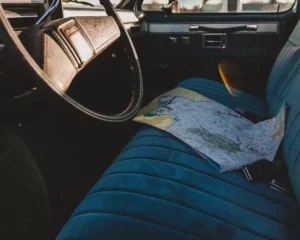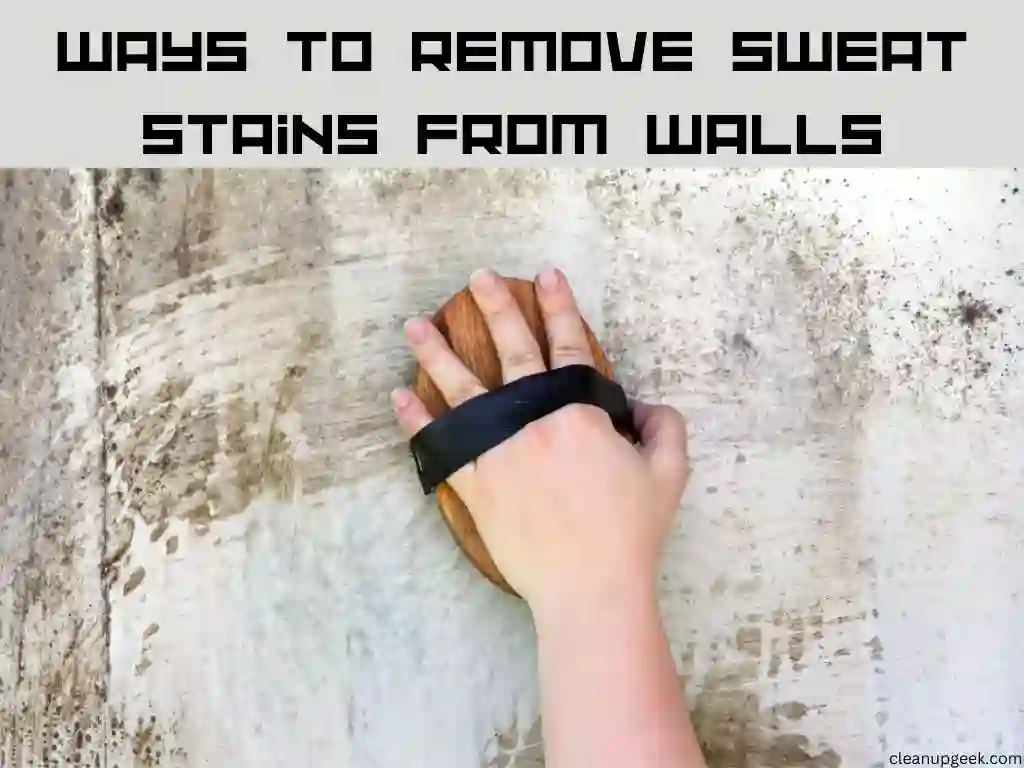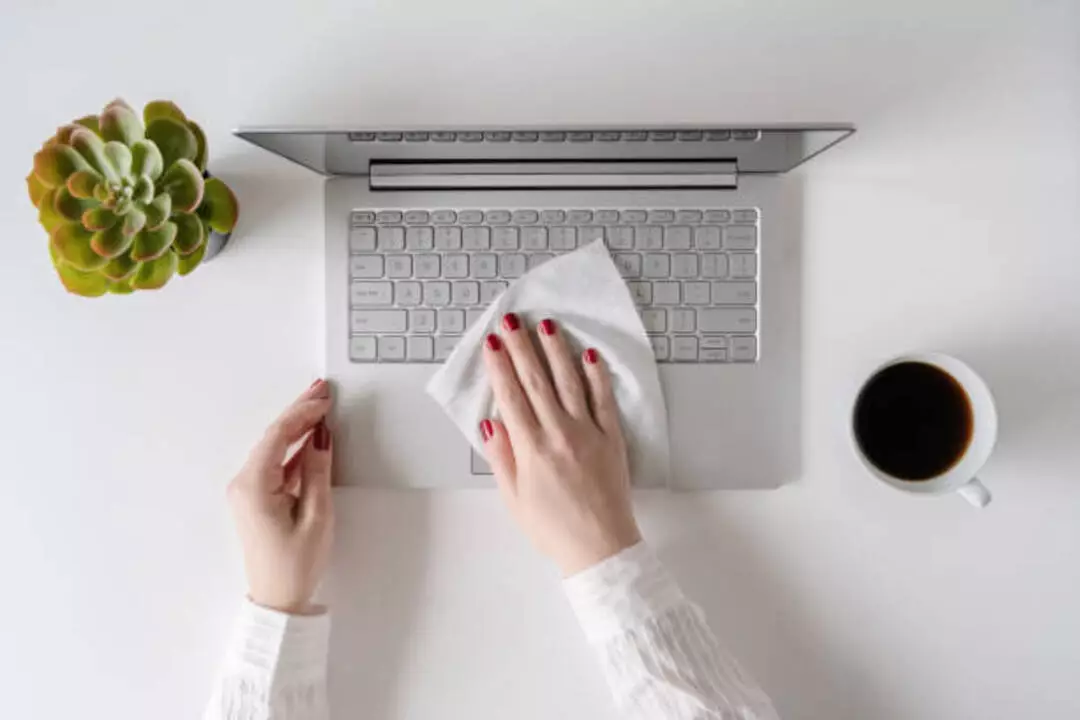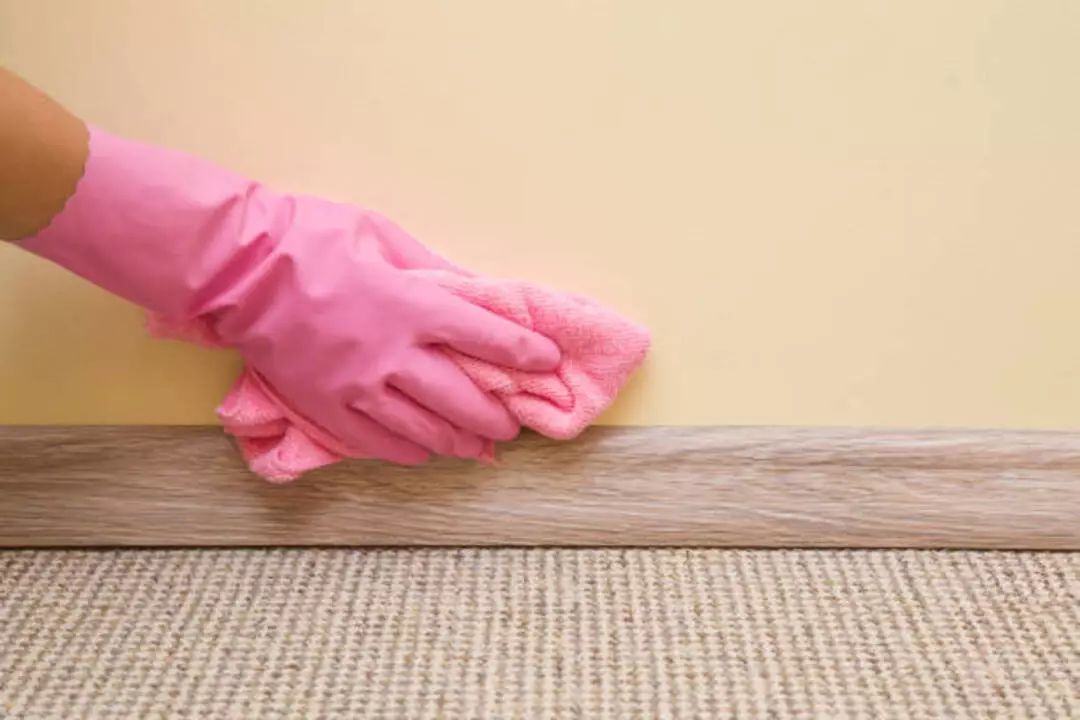Grease stains on walls can be unsightly and difficult to remove, especially if they have been there for a while. These stains are commonly found in kitchens or areas where cooking is frequent. They can be caused by splatters from cooking oil, butter, or even from handprints.
Fortunately, there are several methods to successfully remove grease stains from walls without damaging the paint or wall surface. And the good news is that you can do it yourself without calling in a professional.
In this article, we will discuss effective ways to remove grease stains from walls. With these tips, you can easily restore your walls to their original clean and pristine state.
Factors to Consider Before Removing Grease Stains from Walls

Before attempting to remove grease stains from walls, there are several factors to consider.
1. Assess the type of wall paint
Before attempting to remove grease stains from walls, it’s important to know the type of paint on the wall. The wrong cleaner can cause damage to certain types of paint. If in doubt, seek the advice of a professional.
2. Consider the age of the wall paint
If the wall paint is old and brittle, removing grease stains may cause the paint to flake or peel. In this case, it’s best to consult a professional who can assess the situation and recommend the best course of action.
3. Consider the age and severity of the stain
The age and severity of the stain should be considered as older and more stubborn stains may require a different approach.
4. Determine the type of grease
Grease stains on the wall can come from a variety of sources, including cooking oil, motor oil, and makeup. It’s important to determine the type of grease before attempting to remove it. Some cleaners are better suited for certain types of grease.
5. Test the cleaner
Always test the cleaner on a small, inconspicuous area of the wall before using it on the grease stain. This will ensure that the cleaner doesn’t damage the wall or cause discoloration.
6. Use a gentle cleaner
When removing grease stains from walls, use a gentle cleaner that won’t damage the paint or cause discoloration. There are many natural and non-toxic cleaners on the market that can effectively remove grease stains without damaging the wall.
7. Use the right tools
The right tools are essential when removing grease stains from walls. Soft cloths or sponges, a bucket of warm water, and the appropriate cleaner will help to ensure that the job is done efficiently and effectively.
8. Take safety precautions
When using commercial stain removers, it’s important to take safety precautions. Wear gloves and protective eyewear, and ensure that the room is well-ventilated.
9. Don’t use abrasive materials
Using abrasive materials such as steel wool or scouring pads can cause damage to the paint and leave scratches on the wall. Always use soft cloths or sponges when removing grease stains from walls.
10. Call a professional
If the grease stain is particularly stubborn or if there is damage to the wall, it’s best to call a professional. They will have the expertise and equipment needed to solve the problem quickly and effectively.
Mistakes to Avoid When Removing Grease Stains from Walls

Grease stains on walls can be unsightly and difficult to remove. They can ruin the look of a kitchen or dining area, leaving a lasting mark on your home decor. Unfortunately, these stains can happen quite easily, particularly if you cook often.
Cleaning them can also be a time-consuming and frustrating process, especially if you don’t know how to go about it. Here are a few mistakes to avoid when removing grease stains from walls:
1. Avoid Using Harsh Chemicals
Harsh chemicals can cause damage to the paint or texture of the wall. It’s important to use gentle cleaning agents that are effective in removing grease stains without causing any damage.
2. Test on an Inconspicuous Spot
Before using any cleaning agent, it’s best to test it on a small, inconspicuous spot. This will help determine if there is any damage caused by the cleaning agent.
3. Don’t Use Abrasive Sponges
Abrasive sponges can scratch the surface of the wall. It’s better to use a soft cloth or sponge that won’t cause any damage.
4. Avoid Scrubbing Too Hard
Scrubbing too hard can damage the paint or texture of the wall. It’s important to scrub gently and work on the stain slowly until it disappears.
5. Don’t Use Hot Water
Hot water can cause the grease stain to spread, making it harder to remove. It’s best to use cool water when cleaning grease stains.
6. Don’t Wait Too Long
The longer you wait to clean the grease stain, the more difficult it becomes to remove. It’s best to clean the stain as soon as possible to prevent it from setting.
7. Avoid Using Excessive Amounts of Cleaning Agent
Using excessive amounts of cleaning agents can do more harm than good. It’s best to use a small amount and work on the stain gradually until it disappears.
8. Don’t Dry the Stain
If you dry the stain, it will become more difficult to remove. It’s best to keep the stain moist until it can be cleaned properly.
9. Avoid using too much water
Using too much water when removing grease stains from walls can cause damage to the paint and the drywall underneath. Always use a damp cloth or sponge and carefully blot the area until the stain is removed.
By following these simple tips, removing grease stains from walls will be much easier and cleaner! So, next time when there is a grease stain, be smart and handle it like a pro!
Check this out: Mistakes to avoid when cleaning your carpet
Should You Paint Over Grease Stains?

When it comes to painting over grease stains, it is not recommended. The main reason is that grease stains can bleed through the fresh paint, causing discoloration and a blotchy appearance.
Moreover, painting over grease stains will cause the paint to not adhere properly to the surface, leading to an uneven finish that may peel or flake off over time. To avoid this, it is important to take the necessary steps to treat the walls before any painting is done.
To avoid this, it is important to properly clean and degrease the surface before attempting to paint over any stains. This will ensure that the paint will adhere properly and the finished product will look smooth and even.
However, if the grease stain is particularly stubborn, it may be necessary to use a stain-blocking primer before painting. This will prevent any bleed-through and give the new coat of paint a fresh, clean surface to stick to.
Therefore, painting over grease stains is not a good idea unless proper preparation is done beforehand.
How to Remove Grease Stains from Walls

Grease stains on walls can be a tough nut to crack, especially if they have been left unattended for a while. Whether it’s from cooking or accidental splatters, they can make your walls look old and grubby.
However, the good news is that you don’t have to spend a fortune on hiring professionals to remove grease stains from your walls. With a few simple steps and supplies that you may already have around your home, you can effectively get rid of grease stains and prevent them from sticking to your walls in the future.
Here is how to remove grease stains from walls:
Materials needed:
1. Dish soap
2. White vinegar
3. Spray bottle of bowl
4. Paper towel, cloth, or sponge
5. Warm water
The step-by-step guide:
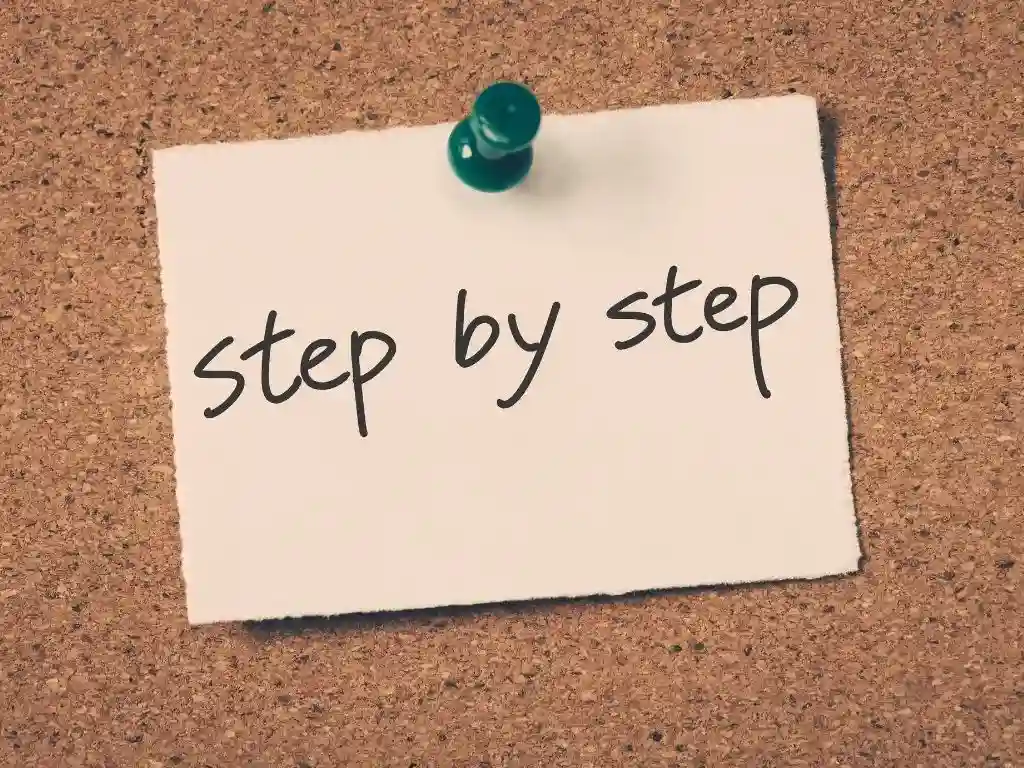
Step 1
Preparation
Before you start cleaning, make sure you have all the necessary cleaning materials at hand. Then, mix equal part dish soap and white vinegar in a spray bottle or bowl. Stir thoroughly to mix the solution evenly.
Step 2
Test the Cleaner
It’s important to test the cleaner on a small, inconspicuous area of the wall before applying it to the grease stain. This will ensure that there are no adverse reactions between the cleaning solution and the wall surface.
Step 3
Apply the Cleaner
Once you’ve confirmed that the cleaner is safe to use, apply it generously to the grease stain. Make sure you cover the entire affected area with the cleaner and let it sit for 10 – 15 minutes to penetrate the grease.
Step 4
Scrub the Stain
Using a wet sponge, paper towel, or cleaning cloth, gently scrub the grease stain in a circular motion. Apply additional cleaner to stubborn stains and repeat the scrubbing process until the stain is removed.
Step 5
Rinse and Dry
After the stain is removed, rinse the wall thoroughly with warm water to remove any remaining cleaner. Use a clean, dry cloth to wipe down the wall and remove any excess water.
By following these simple steps, you can effectively remove grease stains from walls using a household cleaner. Just be sure to test the cleaner on a small, inconspicuous area of the wall before applying it to the stain to avoid damaging the surface.
Check This Article: How to get oil stains out of jeans
How to Prevent Grease Stains on Walls

Grease stains on walls can be a real pain to clean and can even ruin the paint. Luckily, there are things you can do to prevent them from happening in the first place. Here are some tips to help keep your walls grease-free:
1. Choose the Right Paint
If you haven’t already painted your walls, consider using a grease-resistant paint. These paints are specifically designed to resist stains and are a great option for kitchen and dining areas where grease stains are more likely to occur.
2. Use a Splatter Guard
When cooking with oils, use a splatter guard to keep the oil from splattering onto your walls. Splatter guards are inexpensive and can be found at most kitchen supply stores.
3. Clean Spills Immediately
If you spill oil on your walls, clean it up immediately with a damp cloth or sponge. The longer you wait, the harder the stain will be to remove.
4. Keep the Walls Clean
One of the best ways to prevent grease stains on walls is to keep your walls clean. Wipe down counters, stovetops, and other surfaces regularly to prevent buildup.
5. Use Baking Soda or Cornstarch
If you do end up with a grease stain on your wall, try using baking soda or cornstarch to absorb the grease. Simply sprinkle it on the stain, let it sit for a few minutes, and then wipe it away with a damp cloth.
By following these simple tips, you can help prevent grease stains on your walls and keep your kitchen looking clean and fresh.
Conclusion and final thoughts 💭
We hope these tips have helped you get rid of those stubborn grease stains on your walls. Remember to always test cleaning solutions on a small area before applying them to the entire stain. Thanks for reading!
